Category: 131
François Boucher 1703-1770
Born in Paris, François Boucher is one of the most celebrated artists of the 18th century and is credited with the development of the Rococo style and its spread across Europe. He worked in a wide variety of mediums like porcelain, tapestry and print and was a talented painter, draughtsman, etcher and stage designer. From royals to bourgeois collectors, Boucher had a diverse range of patrons, one of which was Madame de Pompadour. The mistress of King Louis XV was known as being the “godmother of Rococo” and Boucher’s portraits played an important role in her self-presentation and image development.
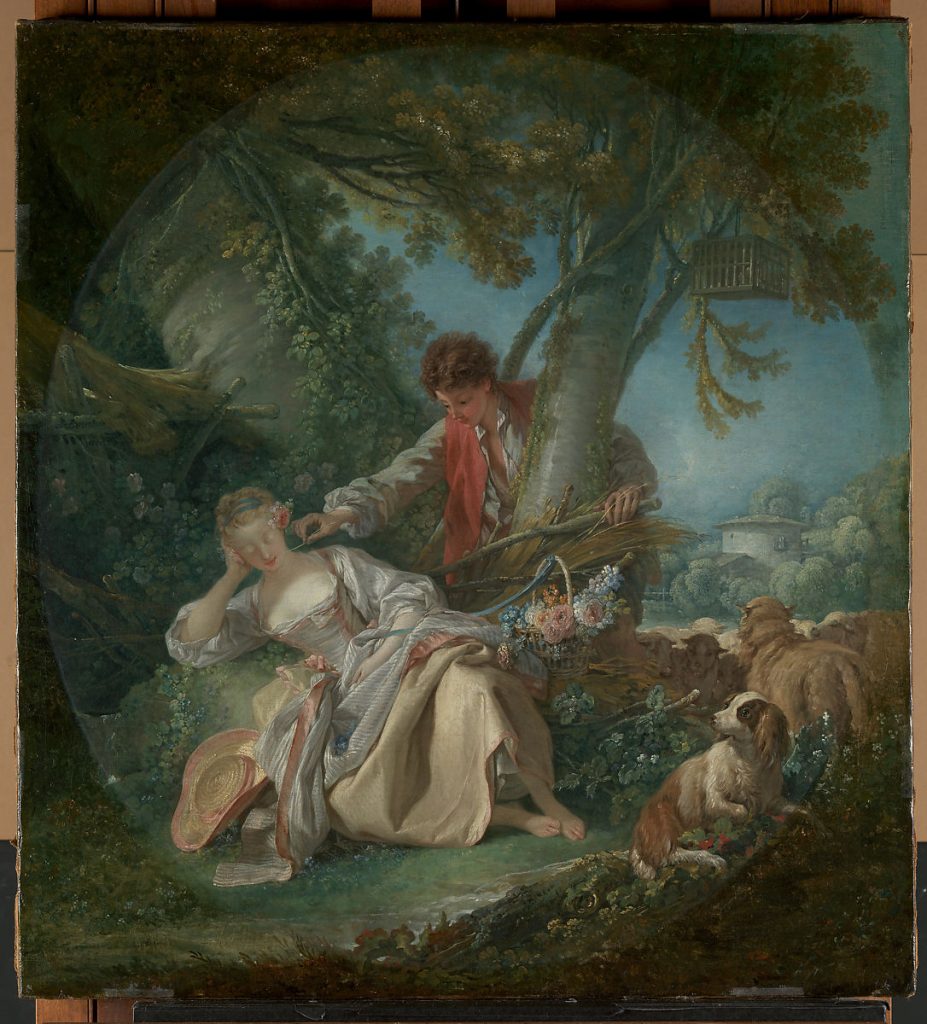
The Interrupted Sleep, oil on canvas, c. 1750 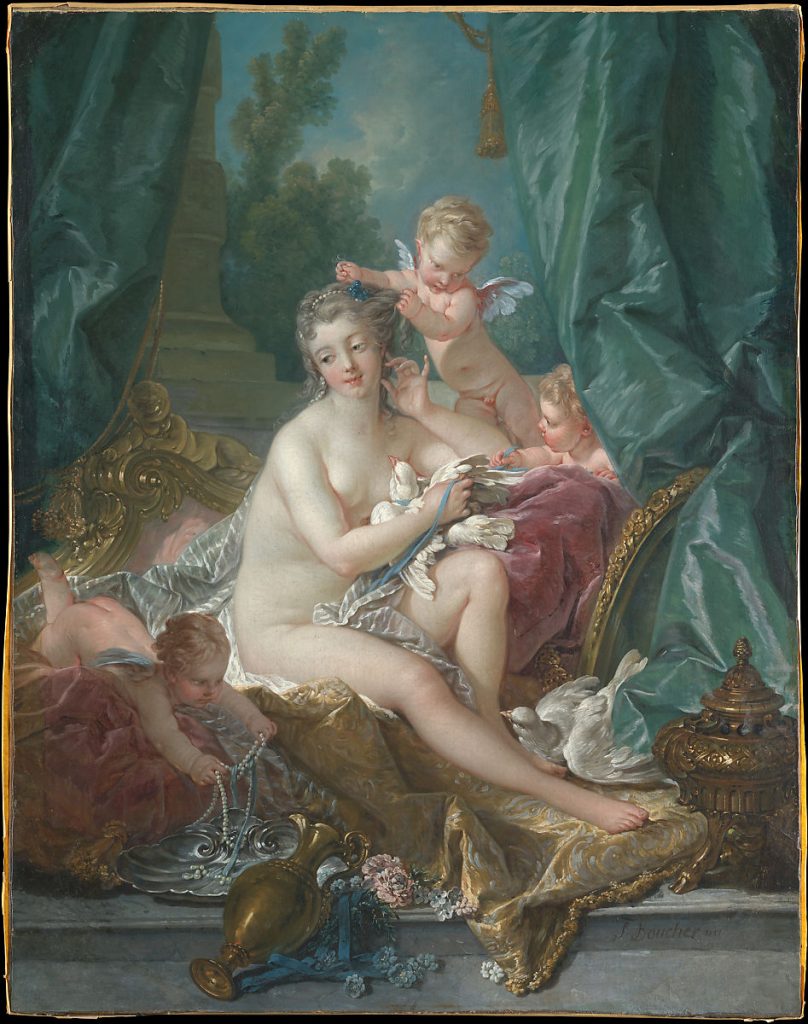
The Toilette of Venus, oil on canvas, c. 1751
Although Boucher’s paintings encompassed a great number of themes, his most original contribution to the aesthetic of Rococo was his reimagining of idealized landscapes. Shepherds and shepherdesses in silk dresses often populated pastoral scenes in a high-toned palette favouring blues and pinks. The Interrupted Sleep and The Toilette of Venus are fine examples of this type of subject matter. What became the hallmark of Boucher’s work and what stood out to me the most was his refined but whimsical style, gently modelled forms and delicate use of colours.

The Love Letter, oil on canvas, c. 1750 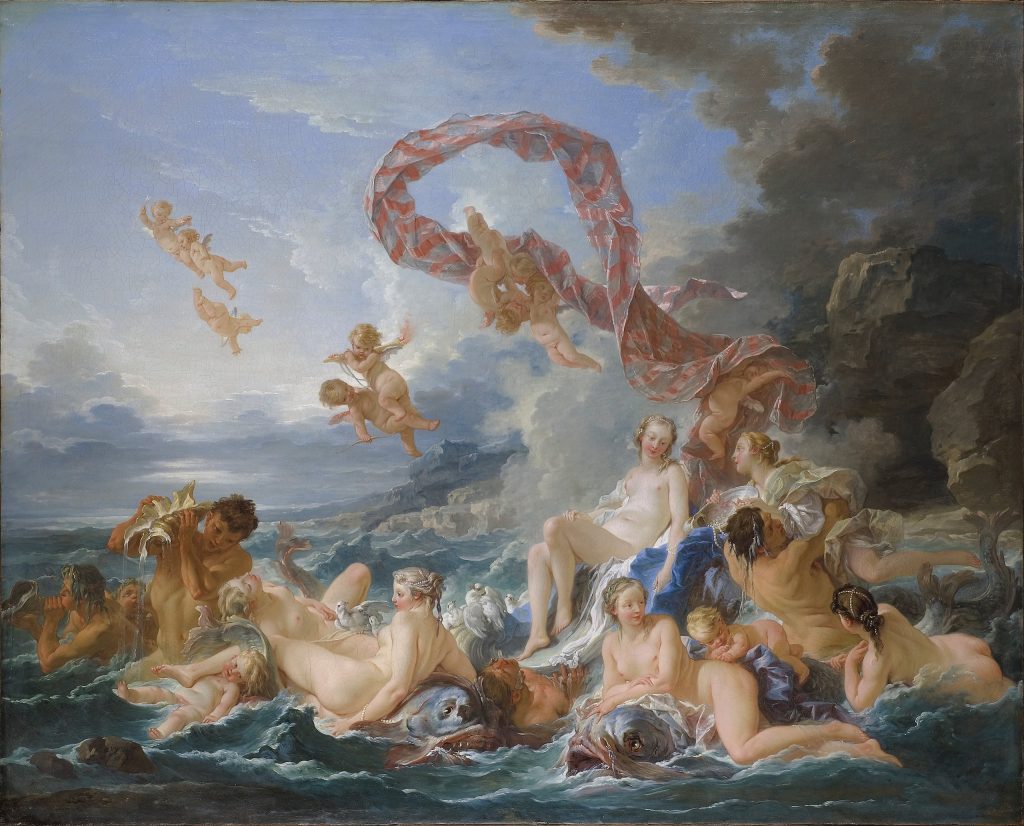
The Birth and Triumph of Venus, oil on canvas, c. 1740 
Allegory of Painting, oil on canvas, c. 1765 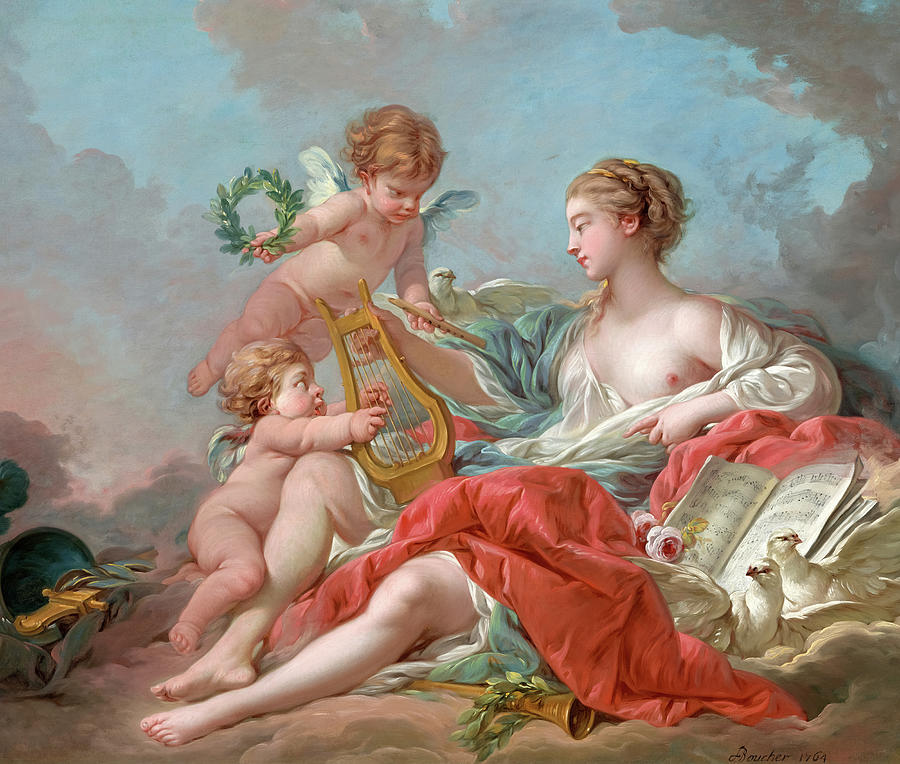
Allegory of Music, oil on canvas, c. 1764
References:
https://en.wikipedia.org/wiki/Fran%C3%A7ois_Boucher
https://www.metmuseum.org/toah/hd/bouc/hd_bouc.htm
https://www.metmuseum.org/art/metpublications/Francois_Boucher_1703_1770
https://www.britannica.com/biography/Francois-Boucher
High Renaissance & Mannerism
Corregio 1489-1534 (Parma)
Antonio Allegri, more commonly known as Correggio, was one of the great masters of the Italian Renaissance. Although he was often overshadowed by artists like Leonardo da Vinci and Titian, he was recognized by predecessors as the most ‘progressive’ of his period. Noted for his striking use of chiaroscuro, Correggio was the pioneer of illusionist painting. His use of dynamic composition and innovative foreshortening led him to achieve dramatic spatial depth in his works, which was one of the most distinguishable features of his style.
Chiaroscuro: an Italian artistic term used to describe the atmospheric effect of strong contrasts between light and dark in a piece, particularly paintings.
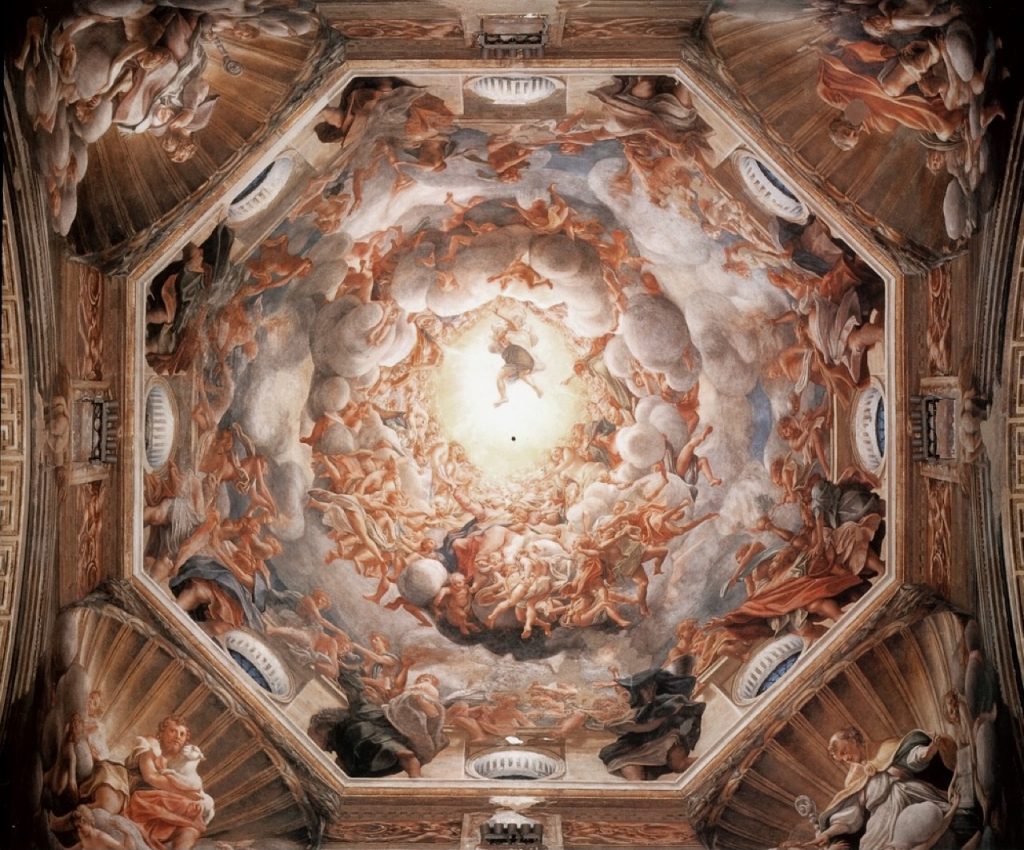
While reading The Story of Art, Correggio’s The Assumption of the Virgin was one of the artworks that stood out to me the most and it became the reason I wanted to conduct my research on him. What caught my eye were the beautiful vortex of sunlit clouds and the realistic figures that populated them. The power in The Assumption of the Virgin is in the way it gives the onlooker the illusion that the ceiling had opened a portal to Heaven. Figures seem to contort as the use of extreme foreshortening is apparent. Interestingly, the fresco is even more striking in person as it illuminates the dark and gloomy space of the Cathedral of Parma. Years later, this piece of work would serve as a catalyst and inspiration for ceiling paintings of the Baroque period. The remainder of Correggio’s works include altarpieces, smaller-scale religious paintings and mythological scenes.

Adoration of the Child, oil on canvas, c. 1526 
The Holy Night, oil on wood, c. 1530 
The Mystic Marriage of St. Catherine, c. 1527 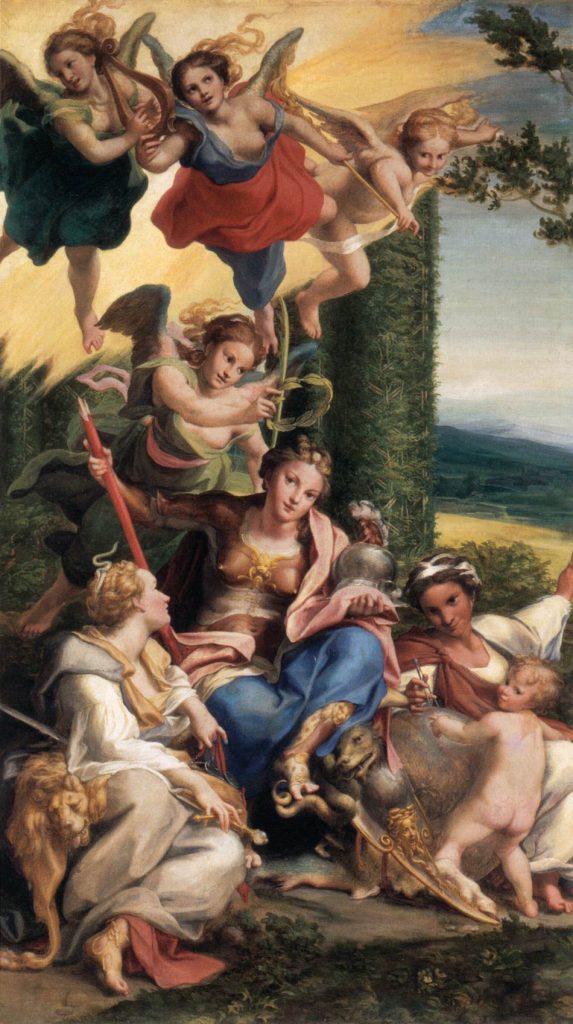
Allegory of Virtues, oil on canvas, c. 1525-1530
References:
https://www.britannica.com/biography/Correggio-Italian-artist
https://www.nationalgallery.org.uk/artists/correggio
Gombrich, E.H. The Story of Art. 16 ed., Phaidon Press, 1995.